American photographer Paul Caponigro said “It’s one thing to make a picture of what a person looks like, and it’s another thing to make a portrait of who they are.”
Textile artist Andrea Cryer’s portrait diptych called ‘Kath 18 and 88’ indeed goes beyond “nice pictures.” The two images hung side-by-side truly capture Andrea’s mother-in-law’s spirit and essence in remarkable ways. She also offers viewers intimate snapshots of specific times in Kath’s life that reveal the complex layers of meaning that come with the passage of time.
In this article, Andrea offers a behind-the-scenes look at how the portraits were created, as well as her thought process related to symbolism and family that were folded into each piece. You’ll also learn how Kath reacted to her portraits shortly before her passing.
Andrea graduated from Bath Spa University with a BA (Hons) in Creative Art (Fine Art & Textiles). Her work has been exhibited globally, including the Bath Art (2018) and Windsor Contemporary Art (2017) Fairs. Andrea was also a finalist in the Hand & Lock International Embroidery Competition (2016).
Name of piece: Kath 18 & 88
Year of piece: 2007
Techniques and materials used: Stitched Drawing – Canvas fabric, thread
Size of piece: 2 x 30″x 50″
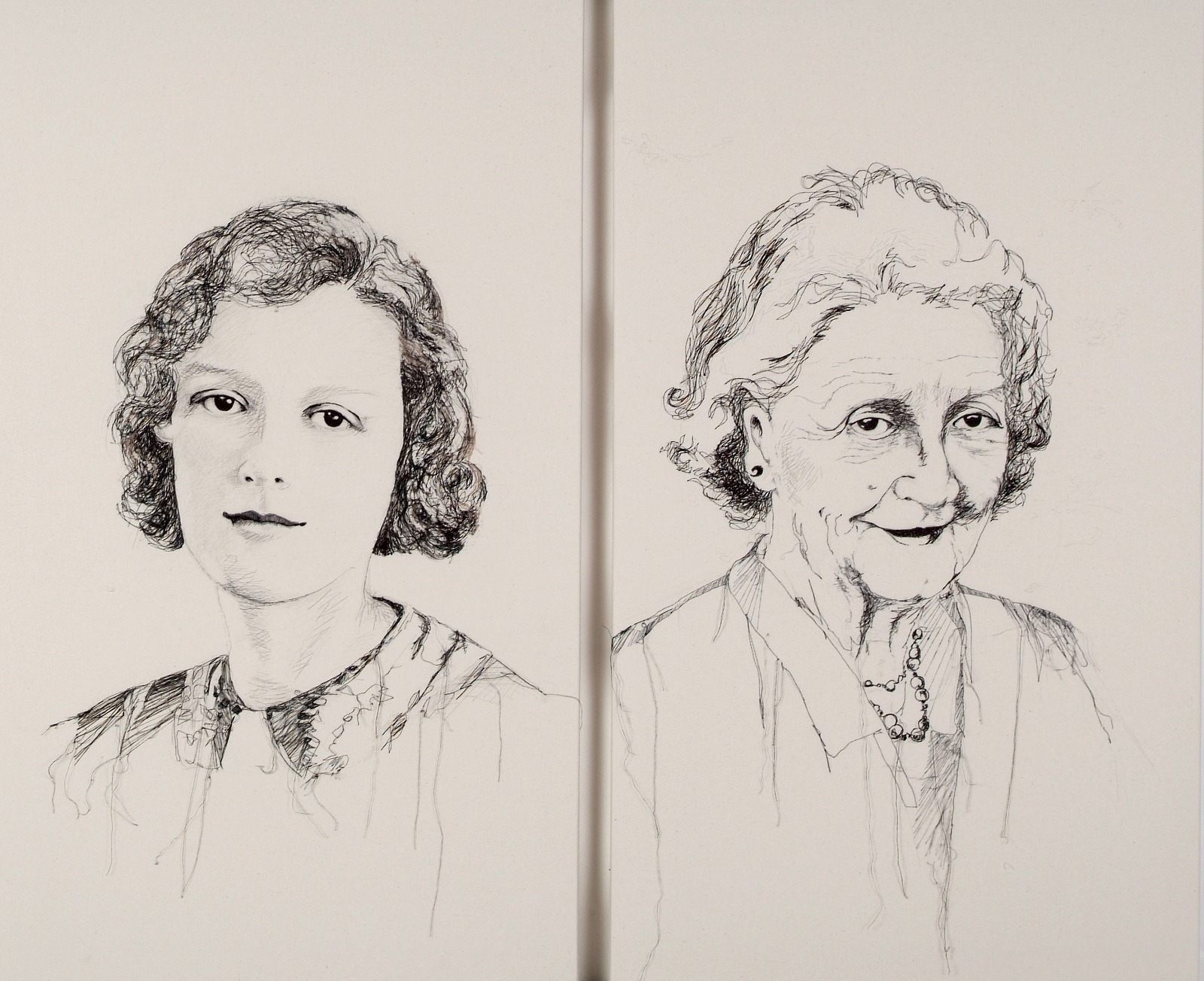
It started with a poem
TextileArtist.org: How did the idea for the piece come about? What was your inspiration?
Andrea Cryer: This piece came about as an adjunct to my main project in my final year at university doing a Creative Art Degree as a mature student, specializing in Fine Art and textiles.
My youngest son had written a wonderful ‘simile poem’ as part of his English schoolwork. The poem describes his grandma by comparing her to everyday things. This lovely piece of descriptive writing was my inspiration for choosing my mother-in-law, Kath, as the subject for my dissertation art module.
Grandma Kath
She is an old white woollen
cardigan with a frilly collar.
And is the gleaming sun
fulfilling all that is good.
She is a cycling hero willing
to be healthier.
As well as the news always
having something different
to say.
She is an old fashioned couch
with the most wonderful
carvings in the world.
She is London for she is a
wondering person looking for
gifts to buy.
And she is a pineapple for
she is sweet on the inside.
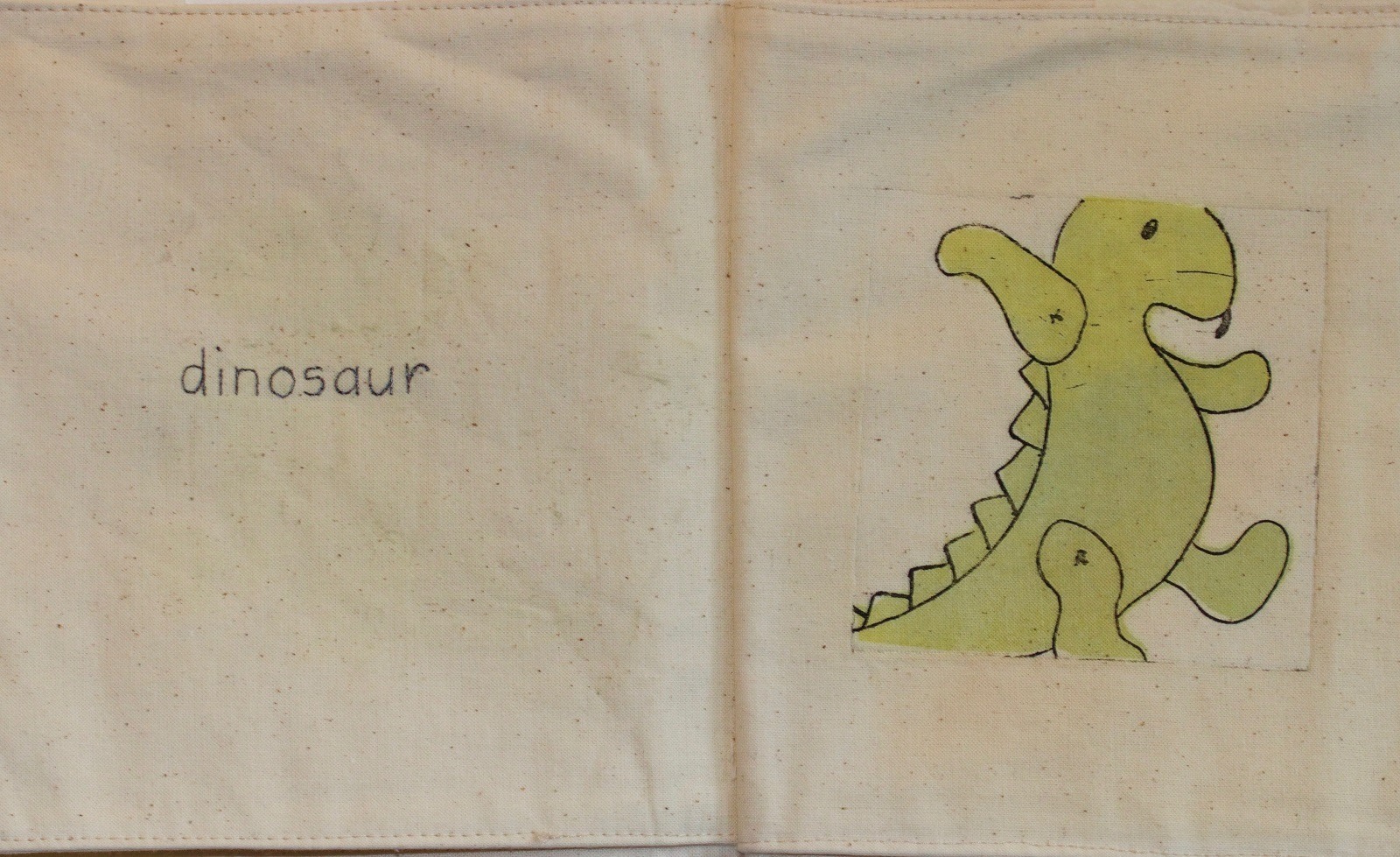
I had enjoyed working in the Print Room at the university, so my project began as a series of tiny etchings printed onto fabric. The etched images were based on simple, pared-down drawings of toys that Kath had made for my children (rag dolls and dinosaurs) together with drawings of her sewing accessories and trusty old Singer treadle sewing machine. I have since inherited that feat of engineering, although I am still bemused by the fact it only has a forward stitch and no reverse!
These fabric etchings were complemented by written lines from the simile poem and descriptions of the images were worked with a tiny backstitch. The fabric etchings and stitchings were constructed into soft toy books suitable for a baby (and currently enjoyed by my little granddaughter).
The books also included etched drawings of my son.
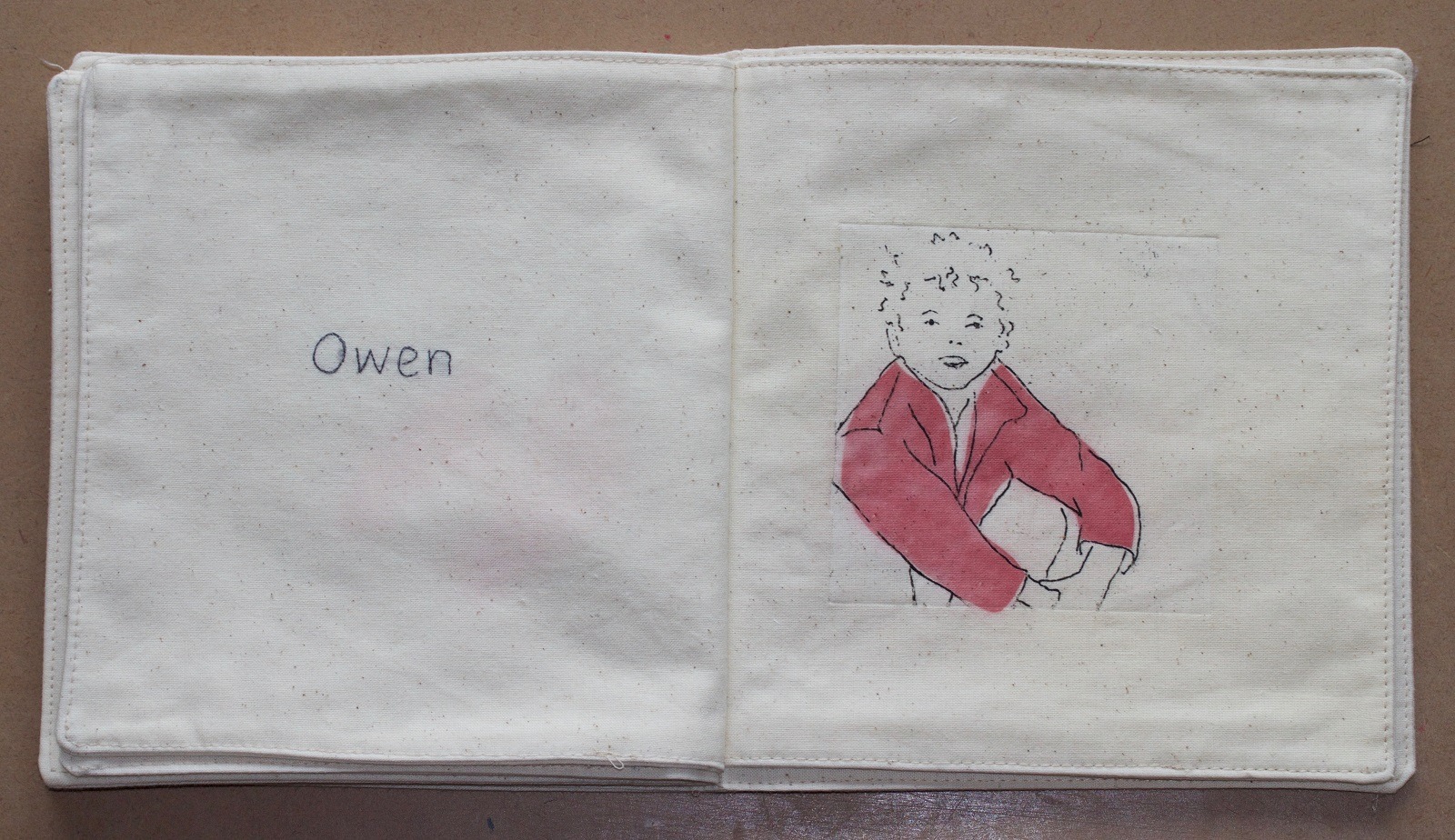
I was happy with my miniature etchings, which had taken many weeks to complete. However, I felt the project needed to incorporate a more formal representation of Kath.
The opportunity came when we were sitting and chatting one sunny afternoon. I looked across at Kath (then aged 88) as she sat there with an enigmatic smile on her face. I knew I had seen that same look before and quickly took a few photos.
I realised that Kath, sitting at the table, had revealed a fleeting glimpse of the young woman I had seen in an old sepia portrait photograph on my parents-in-law mantelpiece. A photograph taken of Kath when she was aged 18.
I decided to draw both images: Kath at age 18 and Kath at age 88.
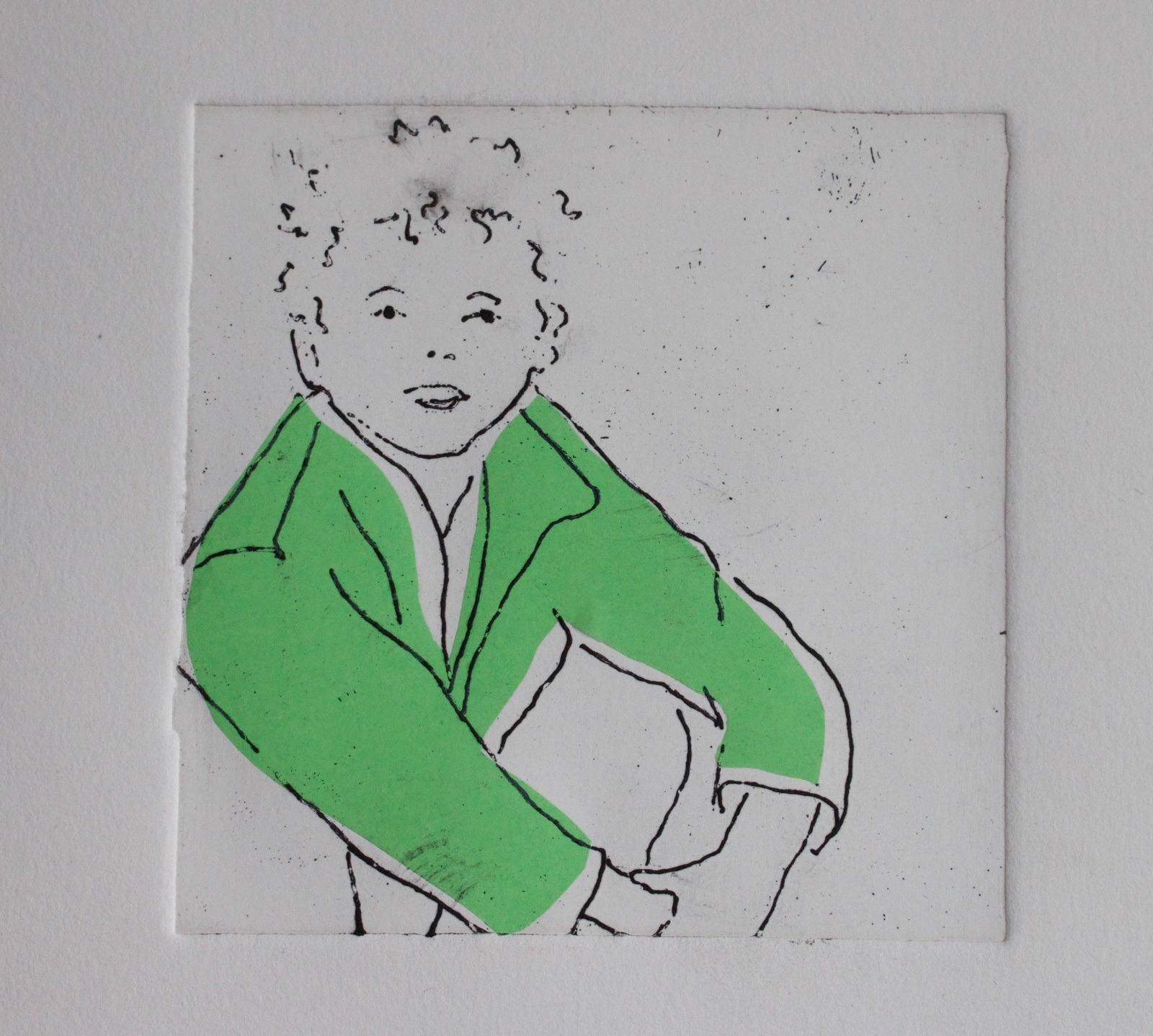
What research did you do before you started to make?
I had fun creating monoprints, carborundum and drypoint portraits of Kath on fabric and paper back in the Print studio. I was still looking for something extra, however, and at that stage had not considered drawing with thread.
I had also made sketches on A4 and A3 papers, but they did not feel right. I played around with changing size and position, putting both images onto the same page, side by side, one behind the other. Nothing worked in the way I wanted it to.
I borrowed an old portable overhead projector from the art department, and after a lot of manoeuvring and experimenting flashing the images onto my living room walls, I settled on the idea of two large individual drawings.
It was then a bit of a Eureka moment when I thought maybe I could draw the images on fabric and wouldn’t using thread be an interesting idea!
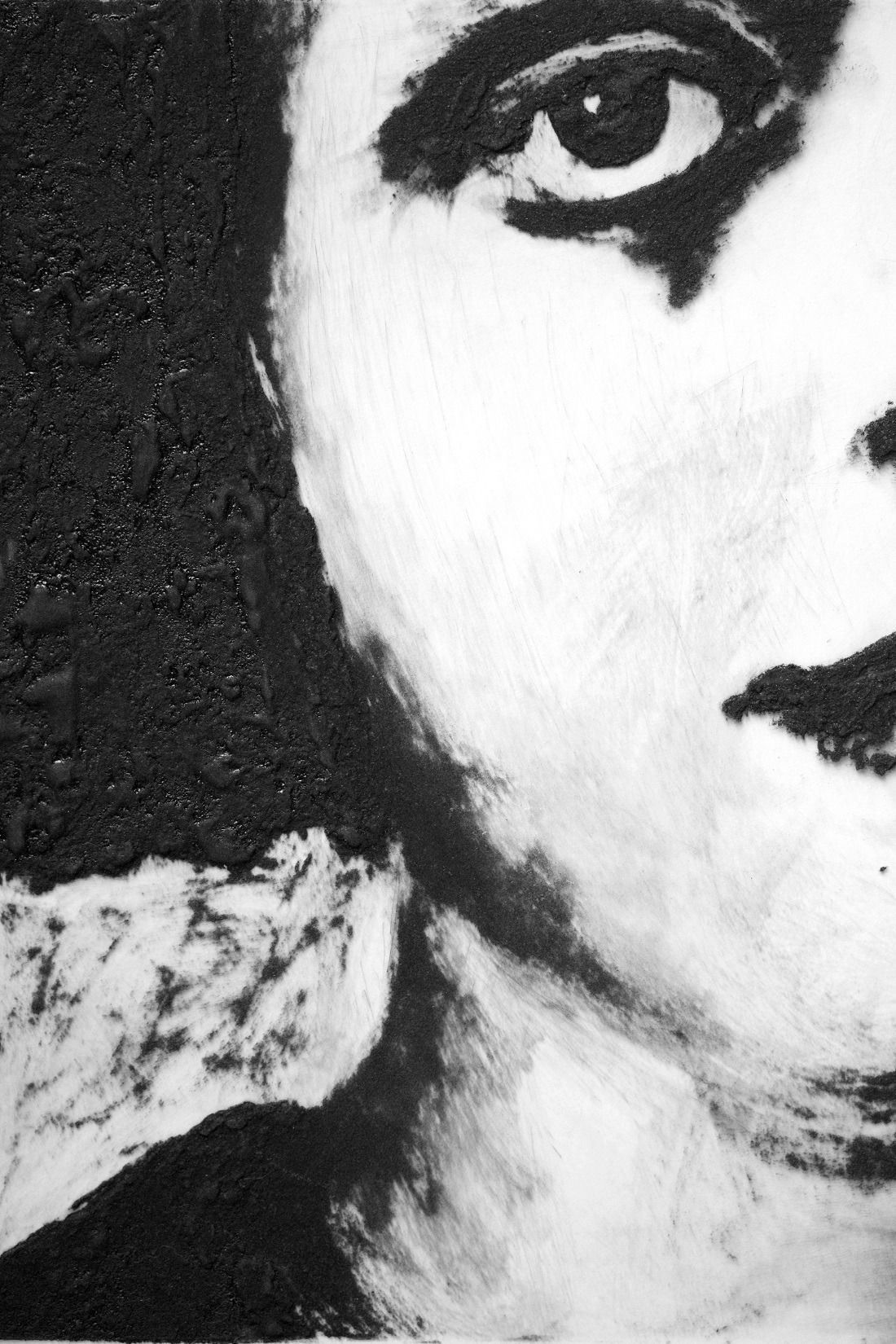
Mark making with a needle and thread
Was there any other preparatory work?
I had made a large-stitched image of my eldest son as part of a drawing module in my first year at uni when we were being taught the basics of knitting, weaving, printing and embroidery.
The portrait was machine stitched mostly using the Irish Machine. I had enjoyed the process, but I didn’t pursue it any further. That was partly because the Irish Machine was in high demand, so often not available.
I also preferred working with mixed media textile work, concentrating on layering and manipulating surfaces, materials and fabrics, particularly if it allowed me to spend time on the industrial embellisher!
It wasn’t until my final year working with etchings that I started to explore the idea of drawing with thread using an ordinary domestic sewing machine.
The two Kaths were my first real attempts to make marks using thread as my ink and needle as my pen. They were my initial inspiration. I felt a new affinity with the process, which I could work on either at uni or at home.
It was both energising and calming: frenetic drawing with the machine at full pelt, followed by reflective slowly-paced hand stitching.
After completing those two portraits, I began experimenting with different threads and surfaces, mixing up ways of producing stitches and using my sewing machine as a drawing tool.
I don’t stress too much about the stitched marks I make. I am not looking for perfection and positively embrace happy accidents. Having said that, though, it does take practice. I am a confident stitcher because I have been doing it for a long time!
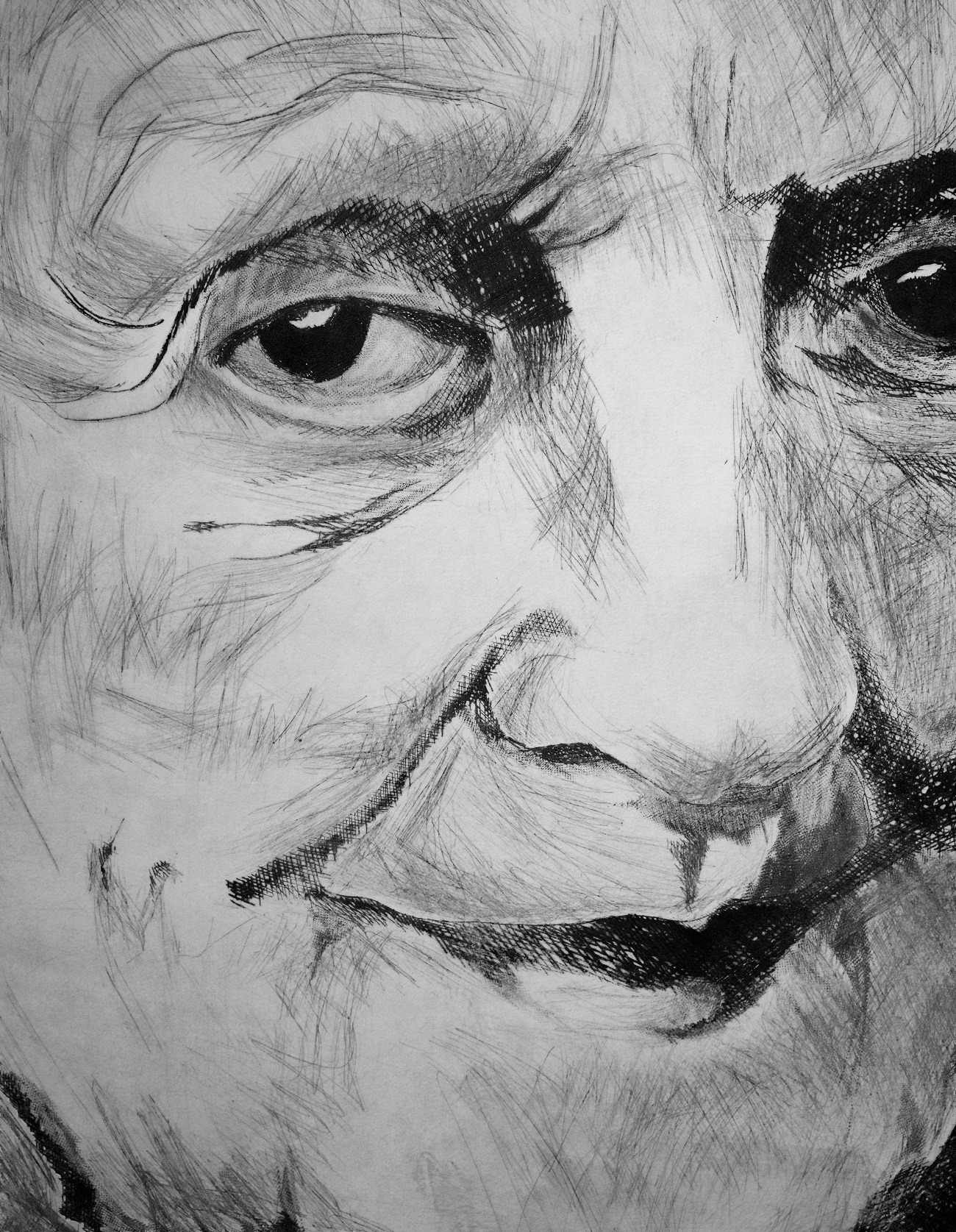
What materials were used in the creation of the piece? How did you select them? Where did you source them?
The decision to create such a large dyptych involved lots of late-night stitching when the kitchen table was free for me to spread out my work. At that time I did not have a designated workroom, so anything I was working on at home had to be put away at the end of the session.
As the images progressed, I pinned each one onto a pair of curtains hanging at the patio door. This enabled me to see the whole piece as I hand stitched the detail, holding the canvas with my left hand whilst passing the needle through with my right hand.
I could then step away from the drawn threads (and of course the drawn curtains!) and see where I needed to make changes. Much safer than my peering at them spread out on the floor whilst standing on the table, which was my default modus operandi.
Keeping the lines monochrome was important, as I wanted the portraits to look as if they had been drawn with pen and ink. And as with etching, the mark-making was my main focus.
I limited my colour palette to blacks, greys and brown threads. These were a mixture of standard sewing thread acquired over the years together with a super range of silk and linen threads ordered online from Texere Yarns. The fabric was a mid-weight canvas which was easy to manipulate without too much creasing.
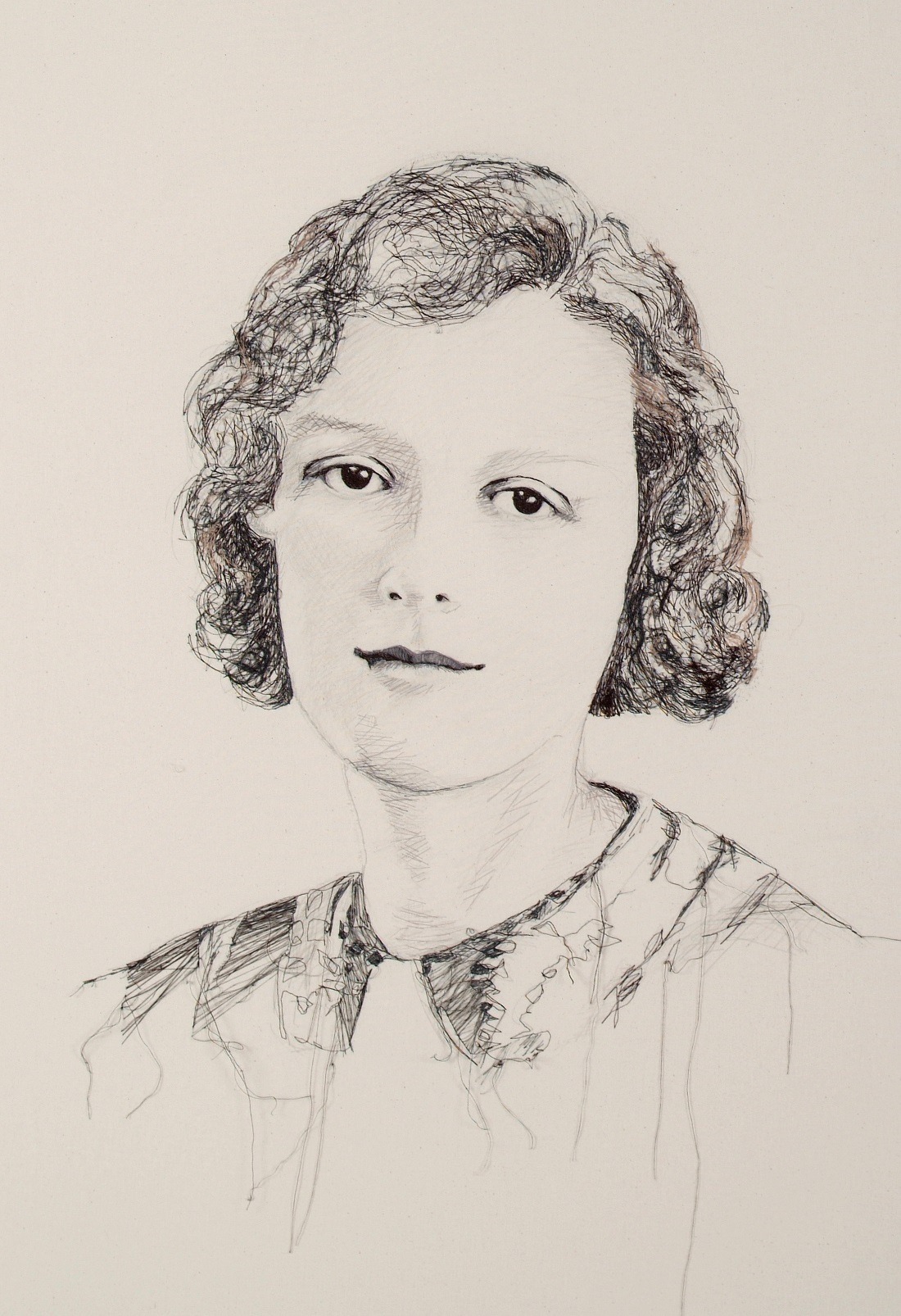
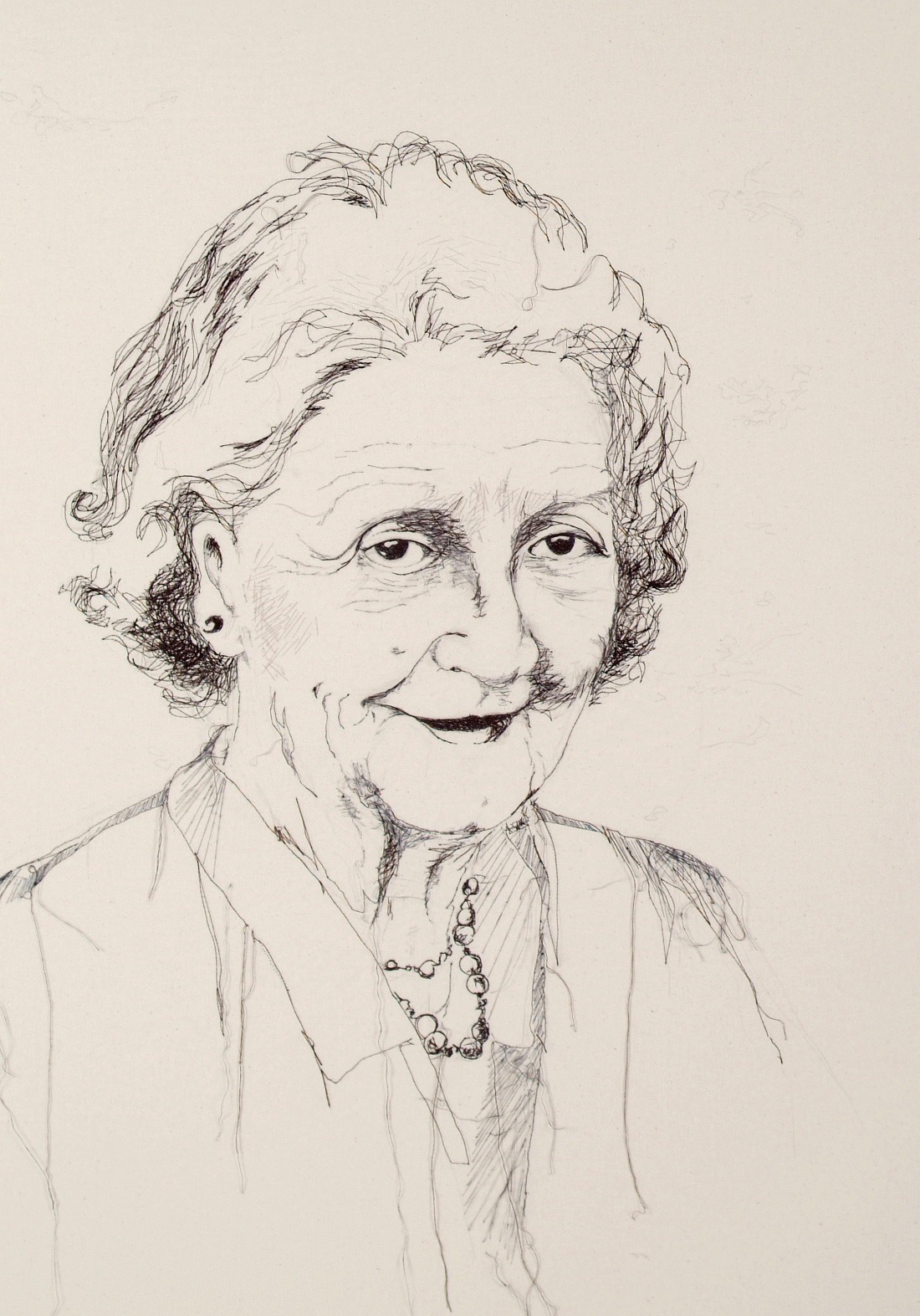
Locks of love
Take us through the creation of the piece stage by stage
I sketched a light outline of the main facial features in pencil and then set to work free motion stitching the detail using my Bernina sewing machine. It’s just an old, fairly basic 1001 model with no fancy knobs and whistles (but definitely with a reverse stitch).
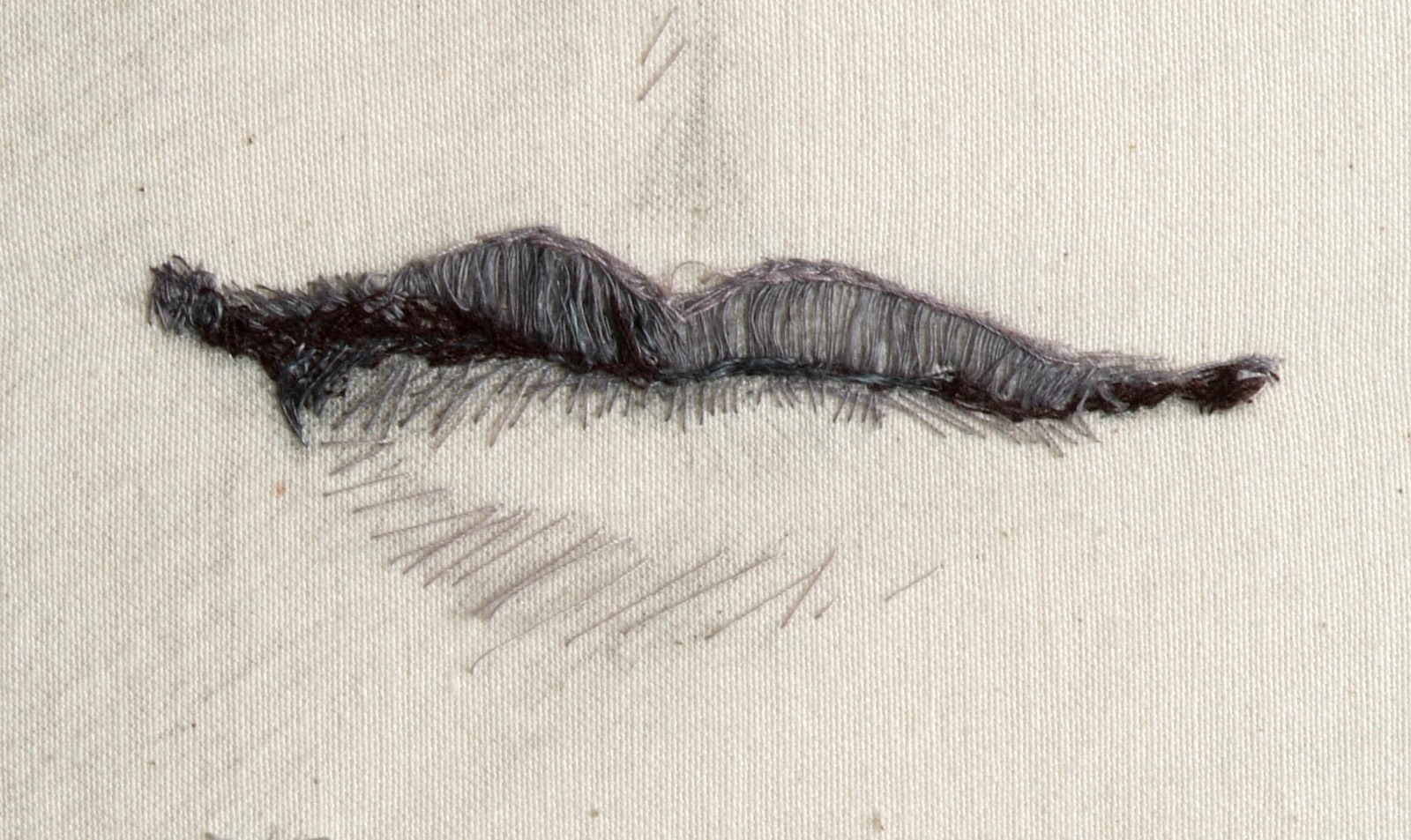
I tackled Kath 18 first, and when that was almost complete, I began working on Kath 88. I started with the eyes which are densely machine stitched with brown threads. Each mouth has a fine machine-drawn line as part of the outline but is mostly stitched by hand using satin stitch and varying lengths of backstitch.
The hair began as machine stitch and was finished with differing lengths of hand stitching in black, grey and brown yarns. The younger Kath has some of my daughter’s hair stitched in with the threads.
Kath loved my daughter’s thick, curly, and often unruly, hair. They had a special grandma/granddaughter bond, and it was important to acknowledge it.
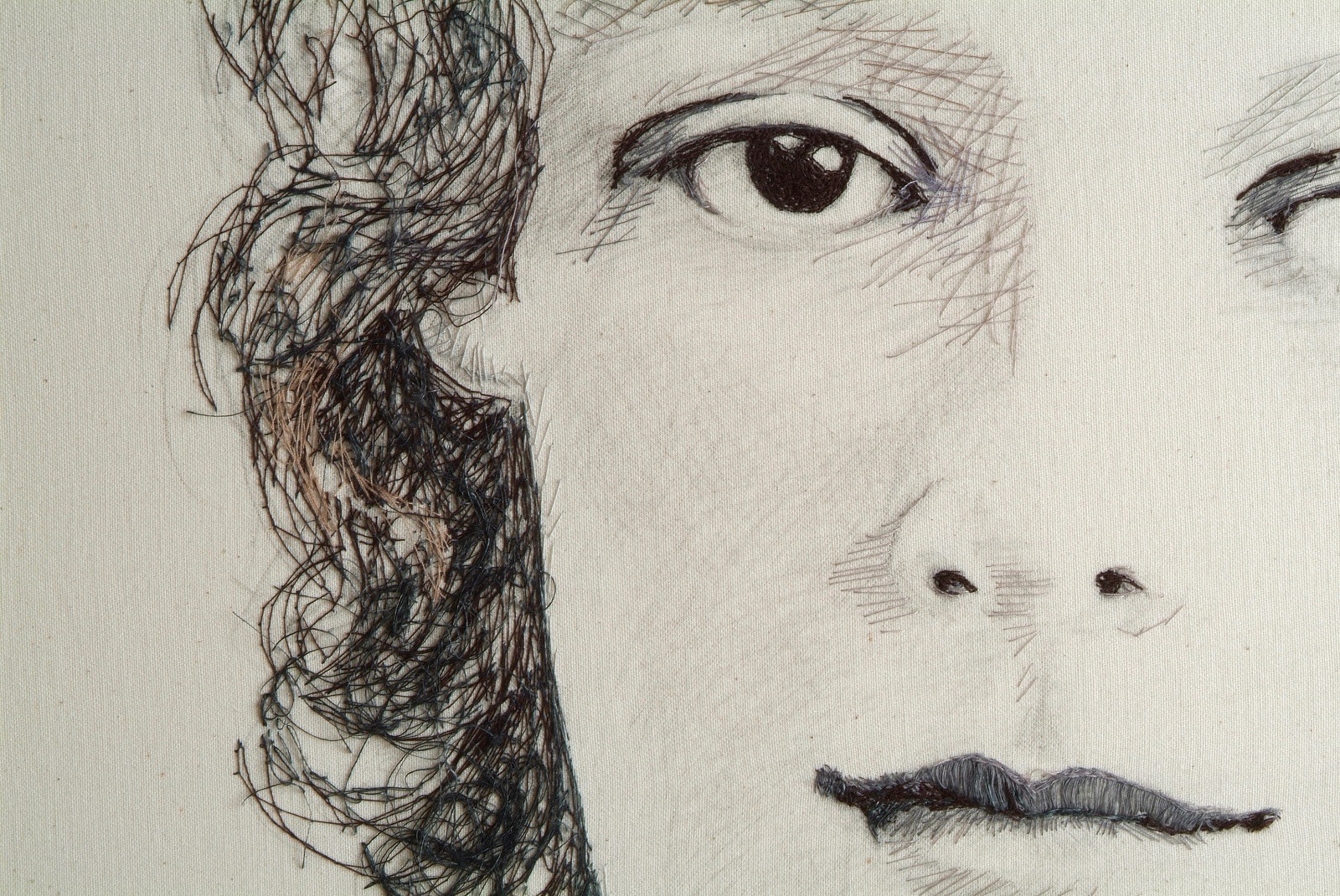
Threading my daughter’s hair within Kath’s stitched hair was a very simple and personal way to achieve this. It also maintained the idea of mark-making, ensuring that the drawings were composed of lines on fabric reflecting the use of lines in etching.
The older Kath contains thread from one of her skirts, which I had unpicked and reused. Kath was an excellent tailoress and made many of her own clothes, including a dark-coloured skirt which she had decided she probably wouldn’t wear anymore.
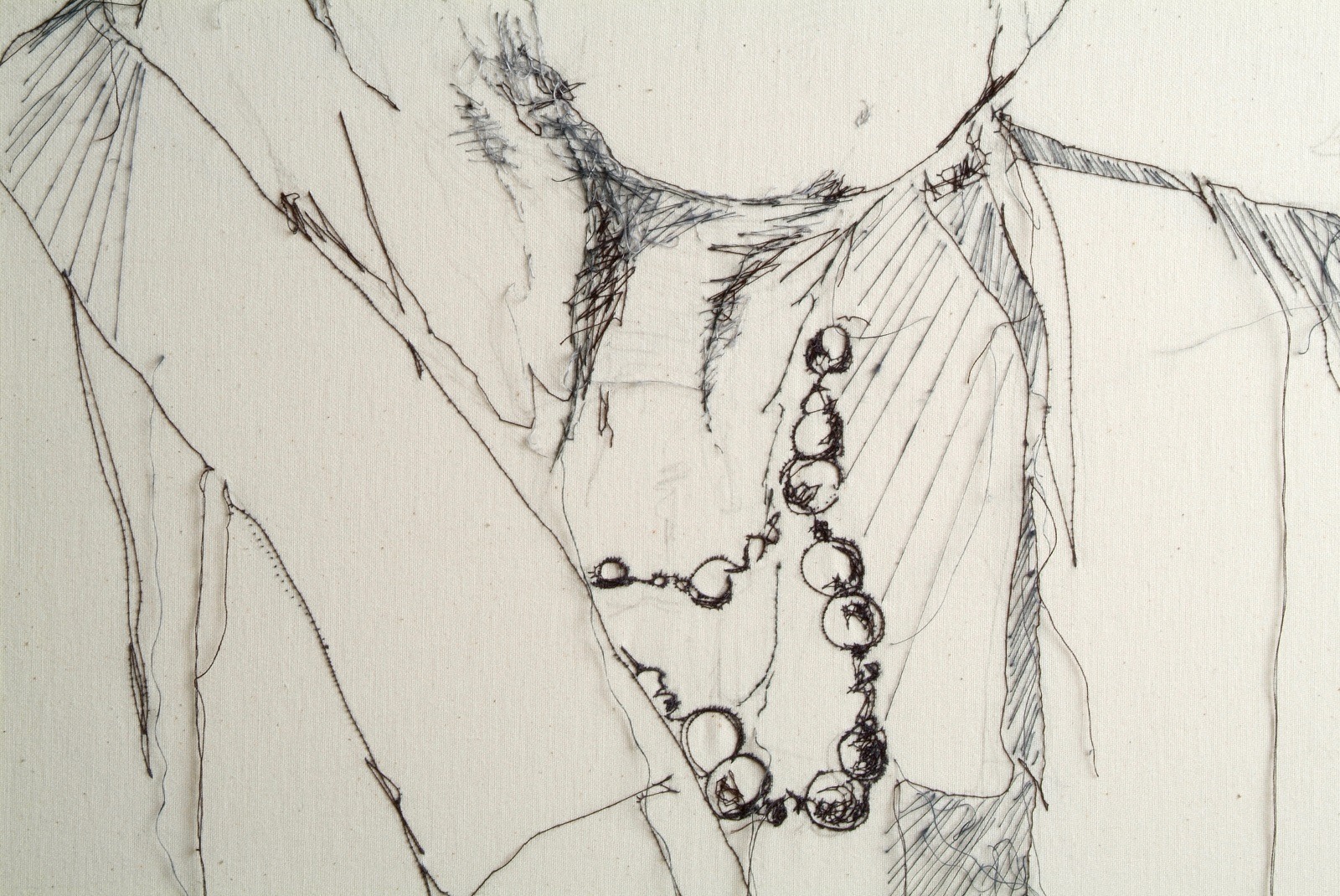
I offered to alter the skirt, and on a whim, kept some of the thread. And I had stored the thread in an old tin which Kath had once given me full of pins, sewing needles, ‘hooks n eyes’ and press studs that were still attached to bits of fabric from which they had been removed. Incorporating the used thread from that tin was just enough to represent the link between us.
Kath’s way of stitching the hem on that particular skirt was catch stitch, so it was easy to remove the thread in long lengths.
I tend to use a herringbone or cross-stitch to hem a garment. In the past, I have made suits and even coats (with skills learned from my dad who worked as a tailor for a number of years). And, of course, I made clothes for my children when they were young.
I rarely do so these days, concentrating my efforts on stitched drawings instead. However, I now have my first grandchild, so who knows?
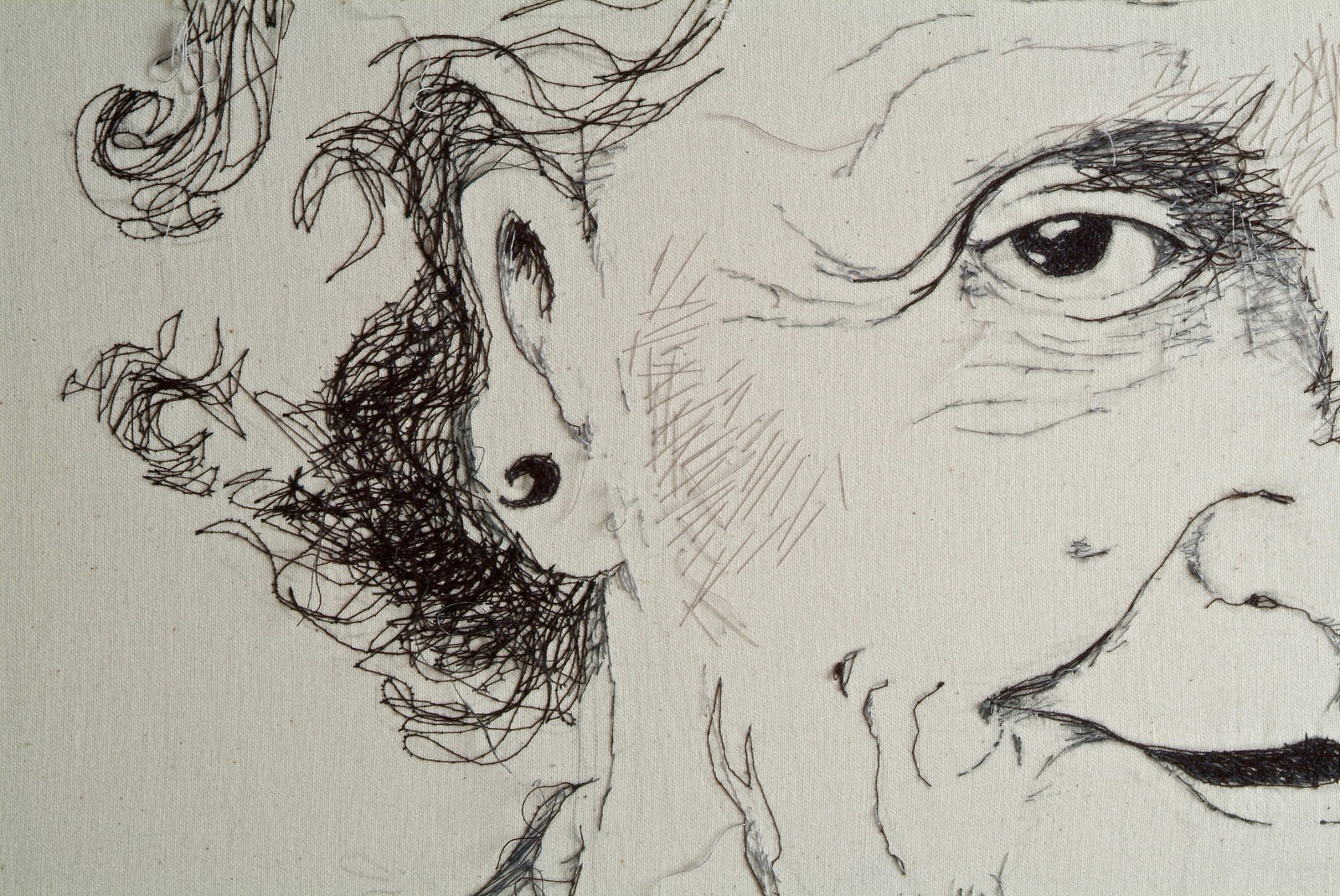
How did Kath and your family react to the two portraits?
The two drawings are each 30 “x 50“. Their size makes an impact. They work best when displayed side by side or opposite each other. It is then the viewer can truly see the relationship between them. The story behind the making of Kath 18 & 88 resonates with the viewer, and displaying the portraits together provokes emotion.
It was important to address the family story and relationship in these pieces. I had considered stitching words from the simile poem into the background, but I felt this was ‘obvious.’ So, my daughter’s hair and the reused silk thread became the subtle personal ties that make the two portraits my husband’s most precious reminder of his lovely mum.
Kath got to see the finished work for the first time at the Degree Show exhibition, shortly before she died. She was totally surprised and I think secretly delighted to see herself up on the wall. There was lots of laughter as she claimed I had made her look more interesting than she was.
I had one photo of Kath standing proudly between her portraits. Unfortunately, that got lost when my old computer crashed irrevocably, but I still have a happy memory of the occasion.
Kath was a funny lady who never took life, or herself, too seriously. She was a woman of strength and character who knew sadness and adversity in her life. But she never let it beat her. She was always up for a bit of fun.
On the day of the exhibition, when she stood for a while with myself, family and passing friends near the portraits of her young and older self, occasionally people looking at the work would see the likeness and smile at her.
When that happened, Kath would slowly cross her eyes to much amusement all around, reinforcing her well-earned reputation as “Naughty Grandma.”
The two portraits are a fitting tribute.
The portraits were exhibited as part of the Art of the Stitch Biennial Exhibition in 2008/9 touring internationally and have since been exhibited locally in the UK.
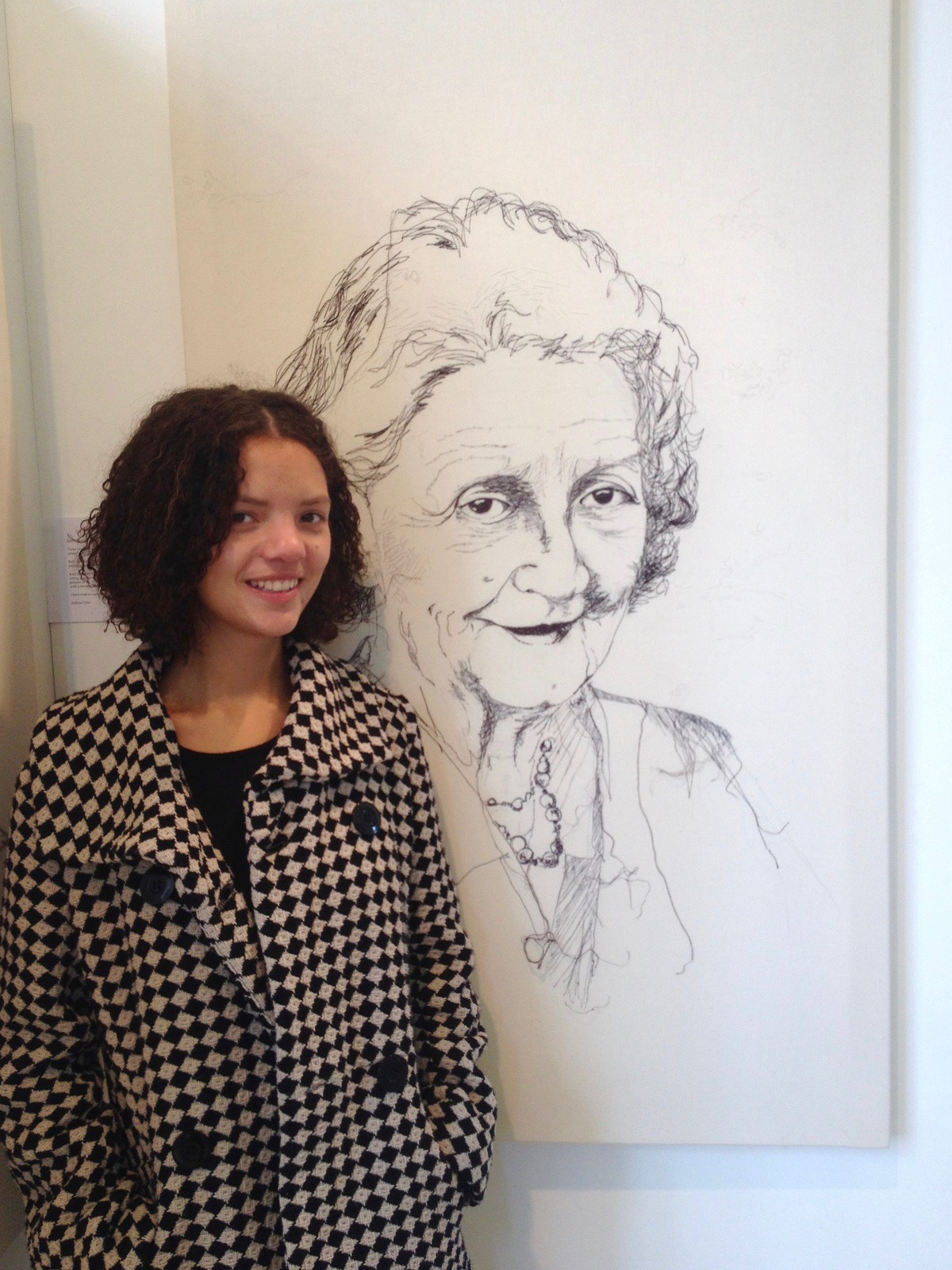
For more information visit www.andreacryer.co.uk or explore our previous interview with Andrea here.
If you were to stitch portraits of a family member or friend over time, whom would you choose, and why? Let us know below
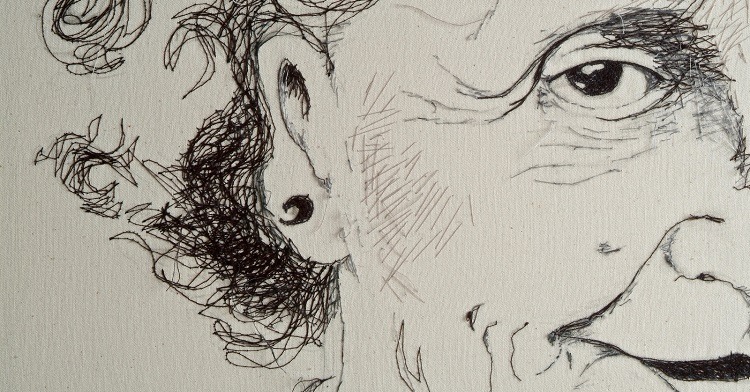

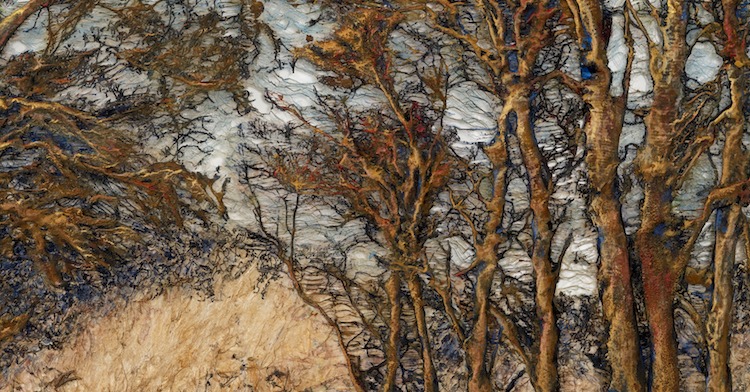
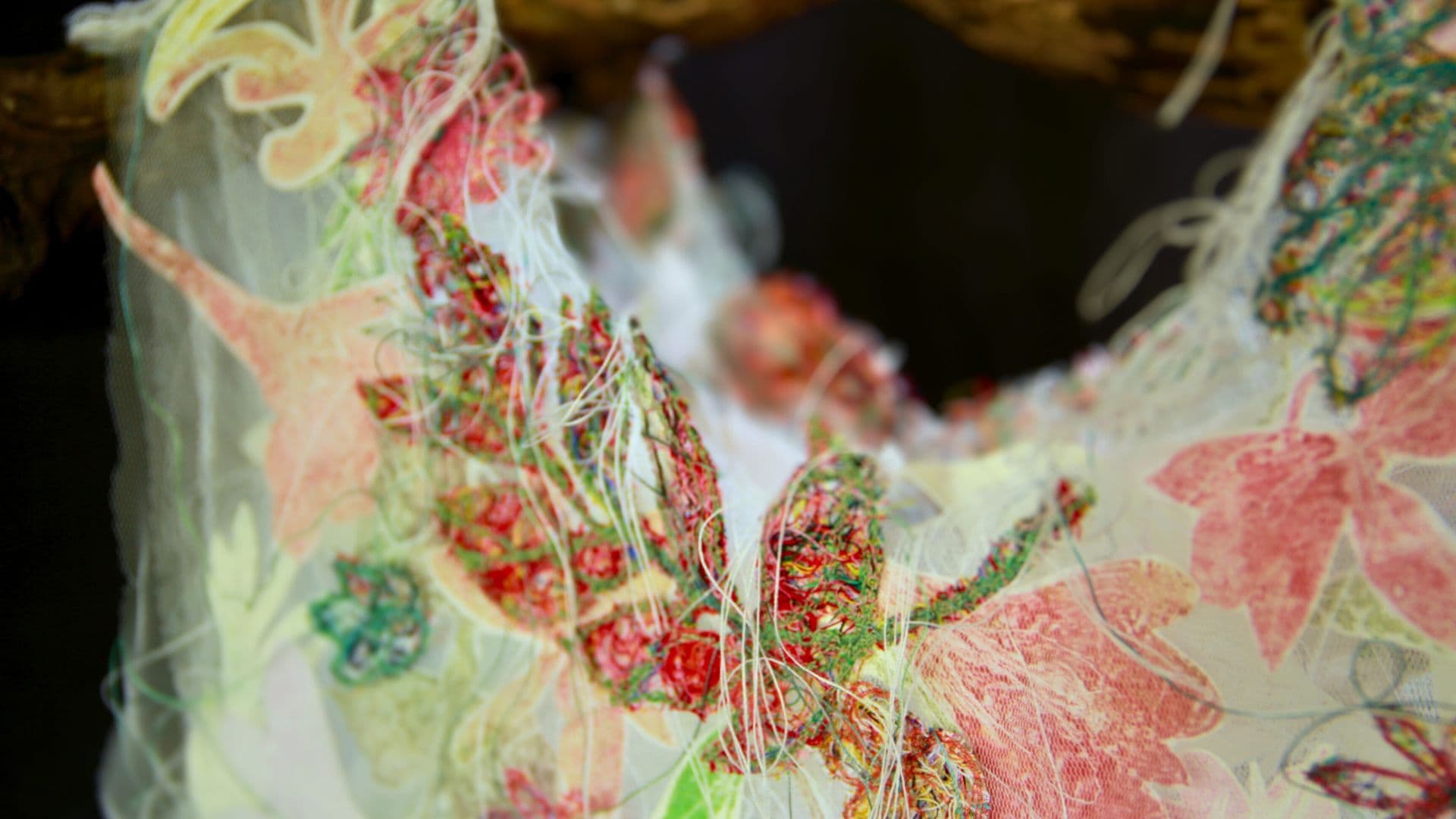
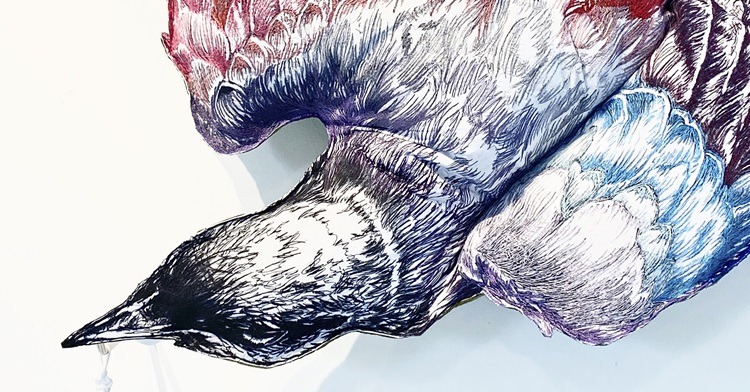
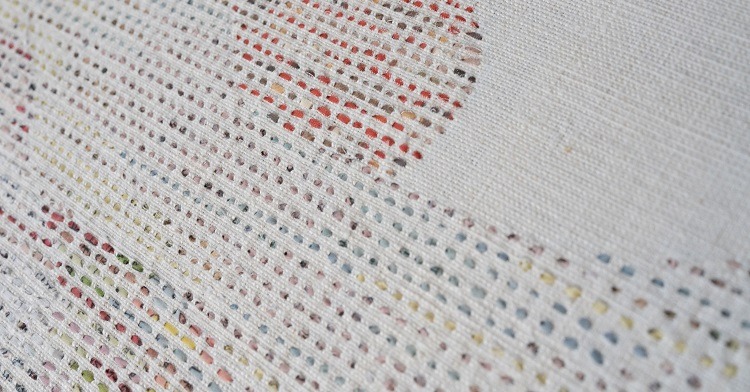
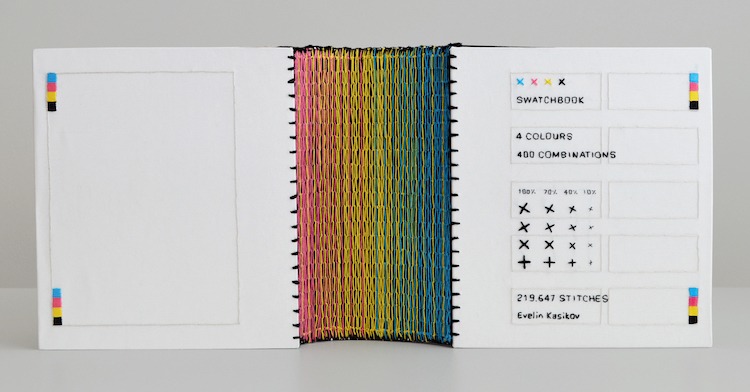
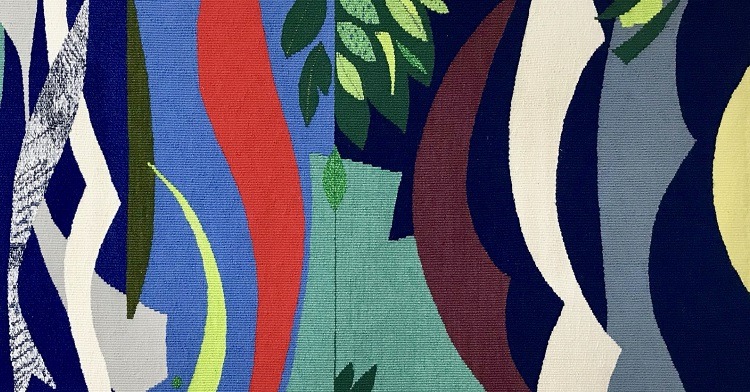
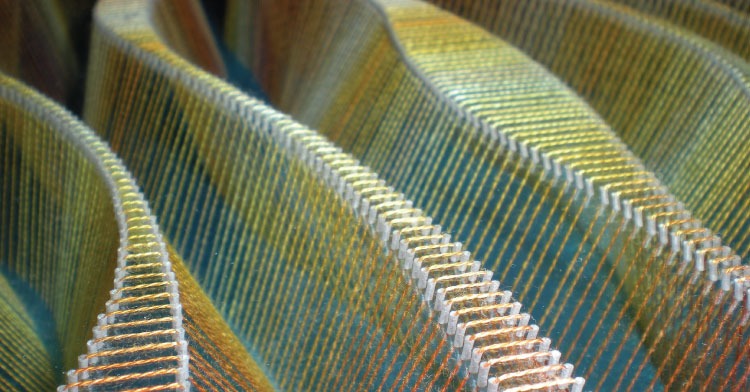
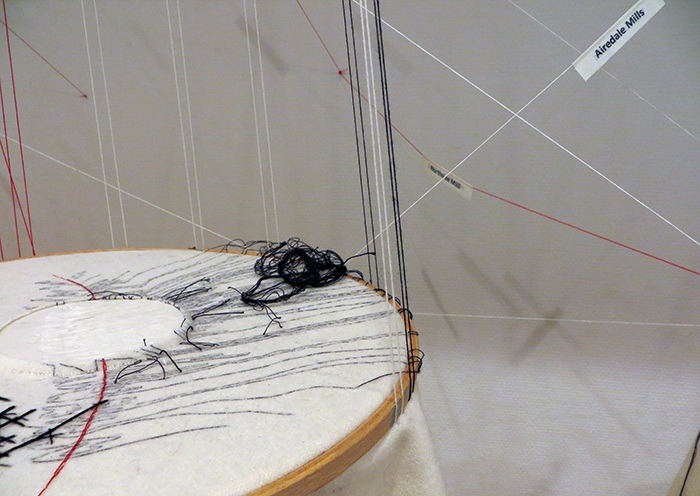
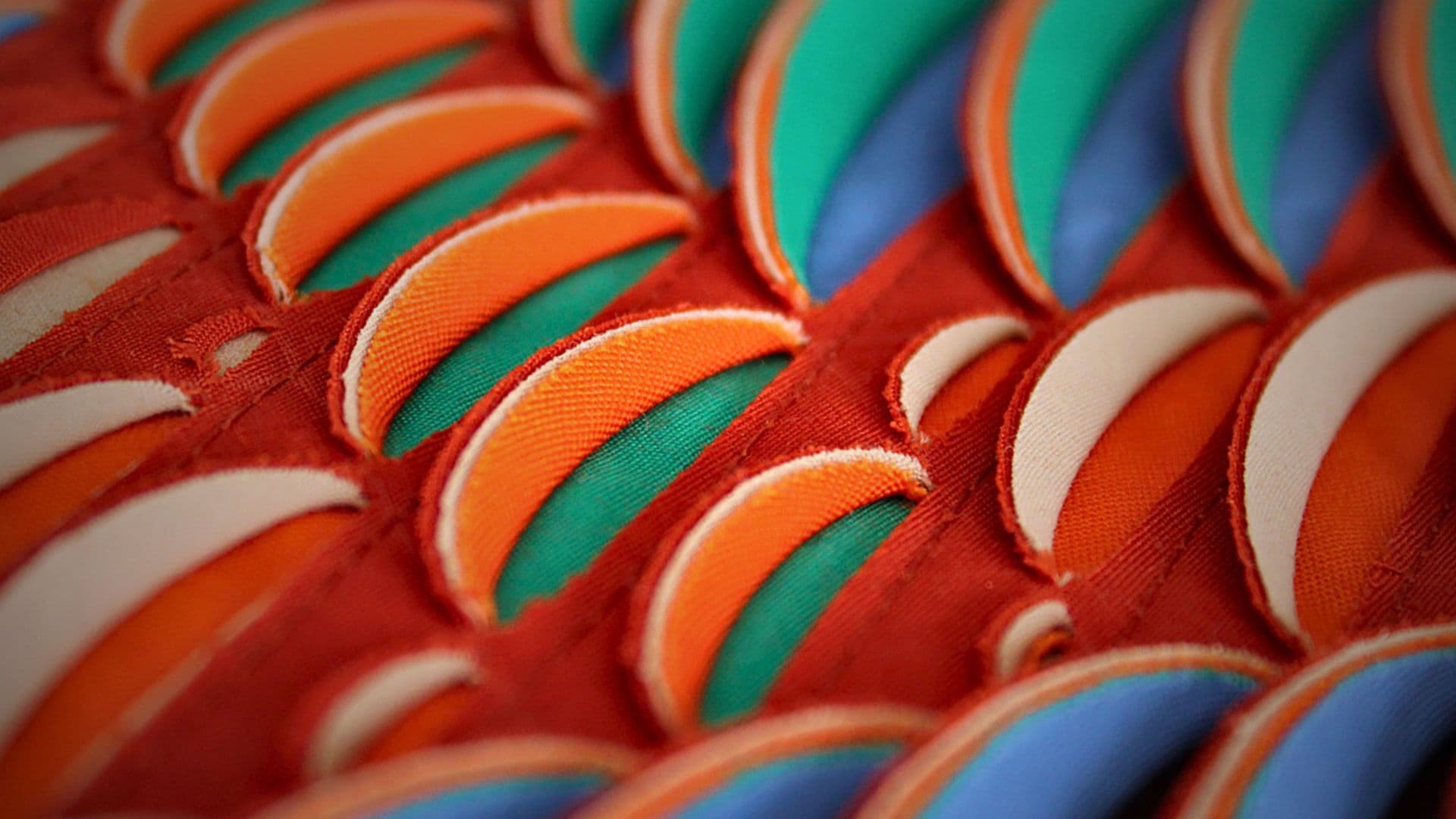
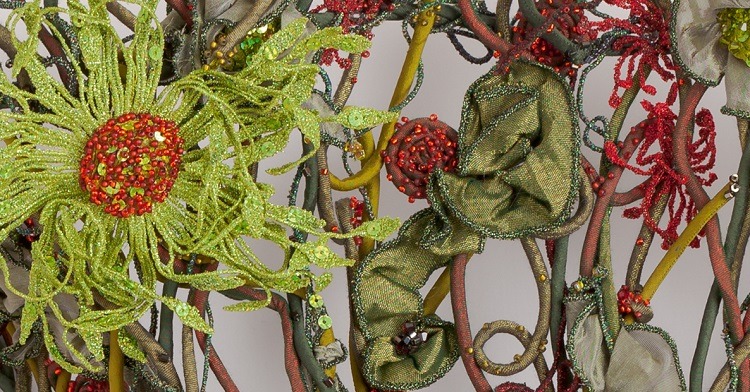
6 comments
Marit Meredith
Truly inspirational! It’s wonderful to have the back-story to the art-work, and a huge bonus that she has revealed her methods. Beautiful and inspirational work.
Linda Carswell
what a fascinating journey!
Lyn
Beautiful story and art work.
Linda Langley
Just love these portraits and admire the skill and work that has gone into the making.
Have an aunt in her nineties and may attempt a similar dyptych
Thank you Andrea Cryer for such detailed info.
Sharron 'Threadpainter'
I absolutely love Andrea’s portrait of Kath. The story behind is a pleasure to read.
ANDREA CRYER
Hi textileartist team,
Many thanks for such a fab interviwew !
It’s good to share the backstory behind this work, which means so much to me and my family.
Best regards
Andrea Cryer